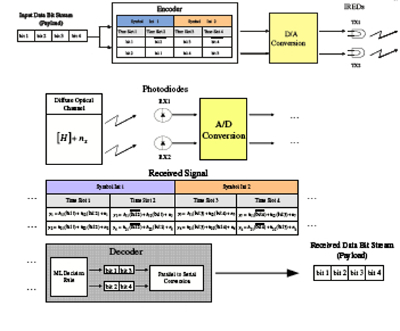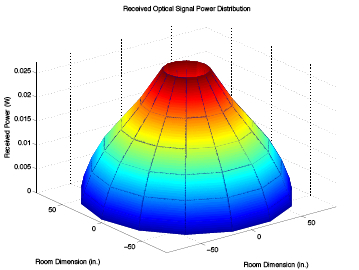Lab Free Space Optical Communications for Novel Local Area Networking
Diffuse free space optical local area networks (LANs) have several potential advantages over conventional radio frequency networks. Beyond the potential for increased data rates, the optical spectrum offers a large unregulated bandwidth capacity potential. Diffuse optical networks are not limited by electromagnetic interference due to the physical constraints of the infrared (IR) medium. Therefore, they are easier to deploy (since they do not require frequency planning) and are more secure than their RF counterparts (since IR radiation is confined within the physical boundaries of the coverage area. However, even with these potential advantages over RF systems, current academic and commercial diffuse optical LAN networks still provide lower data rates than RF LAN, due to the optical power decreasing greatly as the signal diffuses from a medium.

The above diagram illustrates the Alamouti-type code adapted from radio frequency applications to free space optics. Using the software defined radio and programmable network testbed at DWSL, a prototype was constructed to demonstrate the potential of this technique in indoor local area network applications. Coverage areas for high speed diffuse optical service were determined for indoor laboratory environments.
